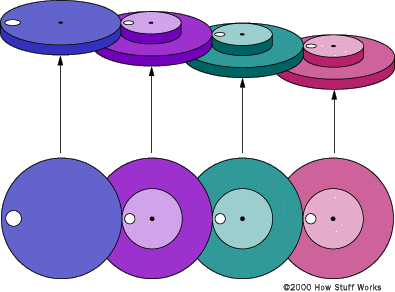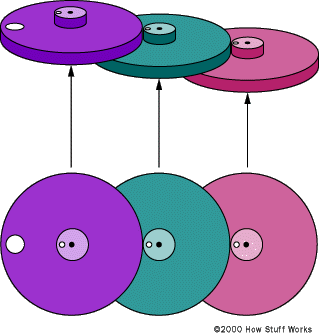
To create large gear ratios, gears are often connected together in gear trains, as shown here:

The right-hand (fuchsia) gear in the train is actually made in two parts, as shown. A small gear and a larger gear are connected together, one on top of the other. Gear trains often consist of multiple gears in the train, as shown in the following two figures:

In the case above, the fuchsia gear turns at a rate twice that of the purple gear. The green gear turns at twice the rate as the fuchsia gear. The pink gear turns at twice the rate as the green. The gear train shown below has a higher gear ratio:

In this train, the smaller gears are one-fifth the size of the larger gears. That means that if you connect the purple gear to a motor spinning at 100 rpm (revolutions per minute), the green gear will turn at a rate of 500 rpm and the pink gear will turn at a rate of 2,500 rpm.
In the same way, you could attach a 2,500 rpm motor to the pink gear to get 100 rpm on the purple gear.
If you can see inside your power meter and it is of the older style with five mechanical dials, you will see that the five dials are connected to one another through a gear train like this, with the gears having a ratio of 10:1.
Because the dials are directly connected to one another, they spin in opposite directions (you will see that the numbers are reversed on dials next to one another). For more information on gear ratios, visit our gear ratio chart.






